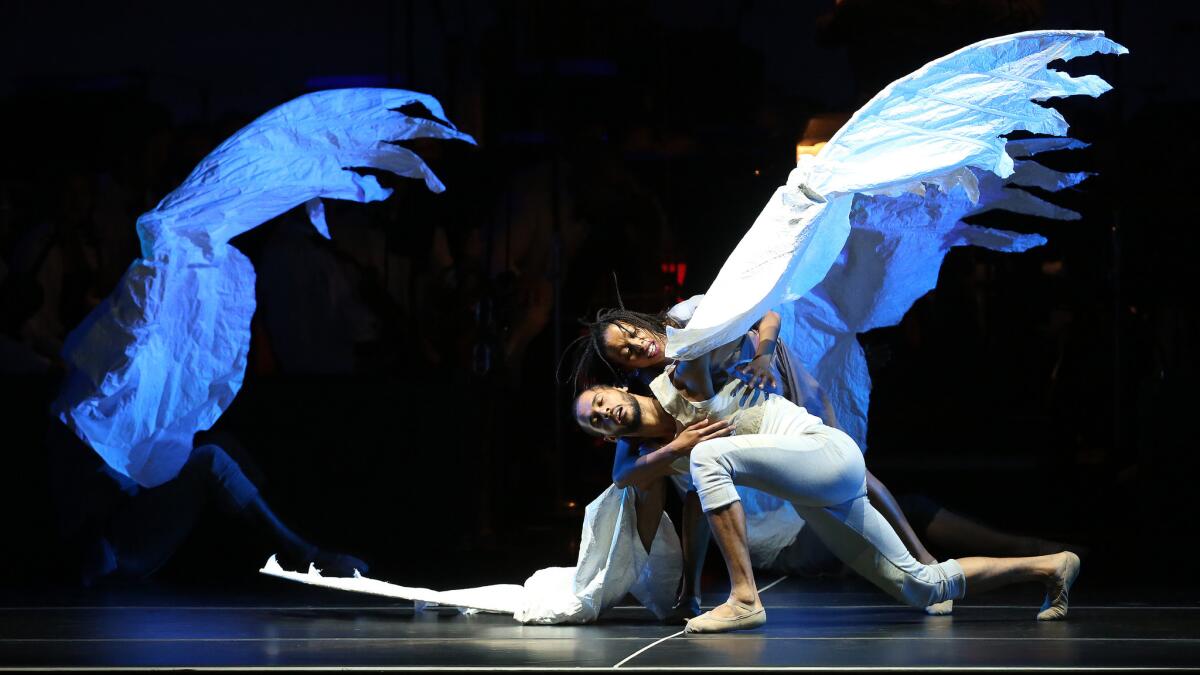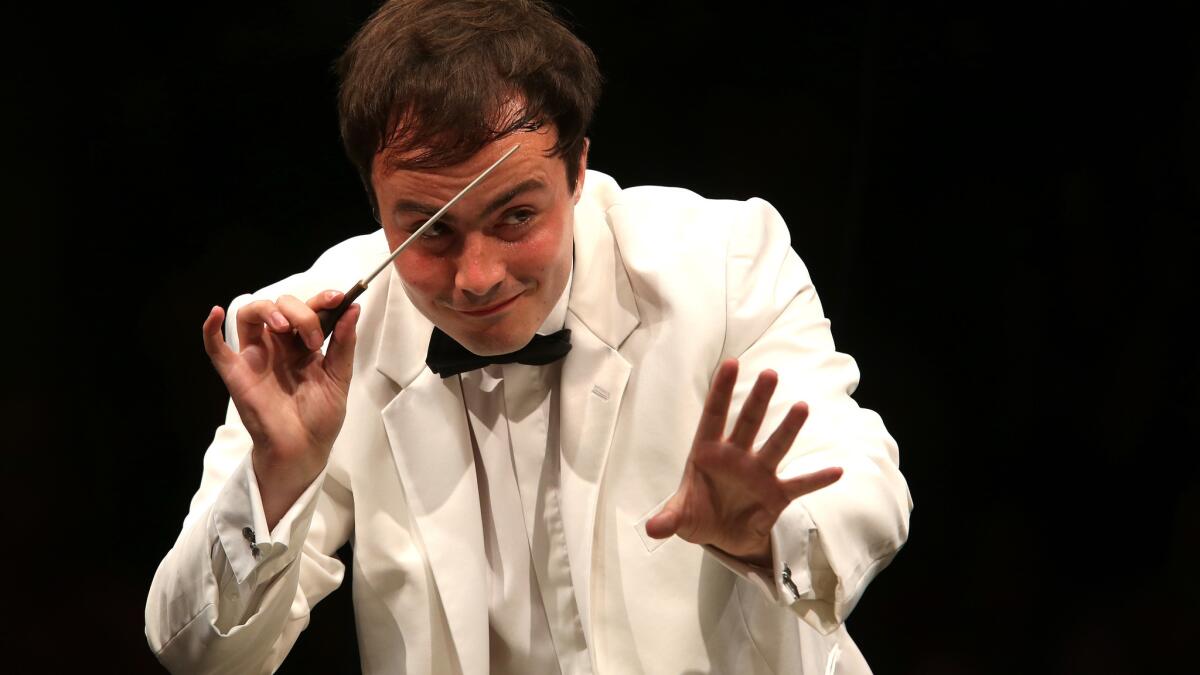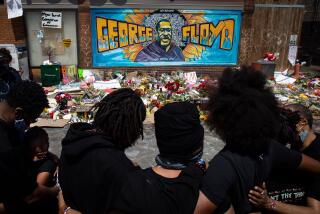Review: A confusing but striking ‘Firebird’ comes to life at the Hollywood Bowl
- Share via
It was an ambitious night at the Hollywood Bowl on Thursday — probably too ambitious, but better that than not ambitious enough.
There hasn’t been much business as usual in the Los Angeles Philharmonic’s season at the historic venue so far this summer. Thursday’s agenda would have been adventurous for most orchestras’ indoor seasons. In the great outdoors, it was remarkable.
The program featured the local premiere of a newly choreographed and re-imagined version of Stravinsky’s “The Firebird,” directed by Janni Younge, formerly associated with the Handspring Puppet Company, the folks behind the puppetry in “War Horse,” and choreographed by Jay Pather. Here, “The Firebird” is turned into a South African fable of virtually impenetrable narrative and meaning, danced in a mixture of classical ballet and African dance and lots of running about, and populated by fantastical and breathtaking puppets operated with poles.

Envisioned with summertime outdoor performance in mind, this “Firebird” production’s balletic gestures tend to be big and athletic, and its puppets even bigger. It featured characters called the Seeker (danced by an engaging Jackie Manyaapelo) and the Alchemist of Honesty (a forceful Ntombi Gasa) and personified concepts such as the Creative, the Innocents and the Destructive (performed by a combination of puppets and dancers).
To pretend that any of it made much sense, either on stage or in the verbose program notes, would be to give it too much credit. Indeed, earnest viewers were probably best served by giving up on the story altogether and just allowing the visuals, which included animated projections above the stage, as well as the projection of live video of the performance on the giant screens right and left, to wash over them mindlessly. In short, though, the story unwound (sort of) as the Seeker’s journey through the concepts, from which she emerged — surprise, surprise — triumphant.
There weren’t enough puppets. When they did arrive — snakes, humans, birds, a quadruped — you wished there were more. They had an uncanny effect, life-like, but also not. The piece ended with the unfurling of a huge firebird, a spectacular vision that made one almost forgive the mess that preceded it.

The up-and-coming British conductor Ben Gernon, winner of the Nestlé and Salzburg Festival Young Conductor’s Award in 2013, a former Dudamel fellow with the Los Angeles Philharmonic and a man still in his 20s, led the L.A. Phil capably enough. The score was neither Stravinsky’s original “Firebird” nor one of the suites, but something put together by Daniel Eppel using, it seemed, the 1910 version of the score. He was also credited with sound design and additional music, presumably referring to some brief interstices of sound effects and light arranging. In all, there was about 55 minutes of it, which sprawled in the context.
And as if this weren’t enough to chew for orchestra and conductor, the demanding first half of the program featured straight performances of Debussy’s “La Mer” and Britten’s “Four Sea Interludes” from “Peter Grimes,” neither of which are easy to toss off on limited Bowl rehearsal time.
The results weren’t embarrassing, but they weren’t particularly distinguished or inspired either. Gernon’s “La Mer” was mostly careful, an easygoing picture postcard rather than bracing journey on the open ocean. The rhythms lacked snap, the whole thing danger and urgency.
The Britten fared better, if only because it is made out of more straightforwardly dramatic material. But the reading was merely solid, and the playing, as in “La Mer,” was not notably honed. Gernon can certainly be credited for the evening with nothing less than a job done sturdily, though.
Lastly, the sound system wasn’t in the finest fettle either. Balances were off, with some amusingly out-of-whack emphases in the woodwinds, timpani, bass drum and tuba. Climaxes were shrill and murky. Oh well.

Follow The Times’ arts team @culturemonster.
More to Read
The biggest entertainment stories
Get our big stories about Hollywood, film, television, music, arts, culture and more right in your inbox as soon as they publish.
You may occasionally receive promotional content from the Los Angeles Times.










